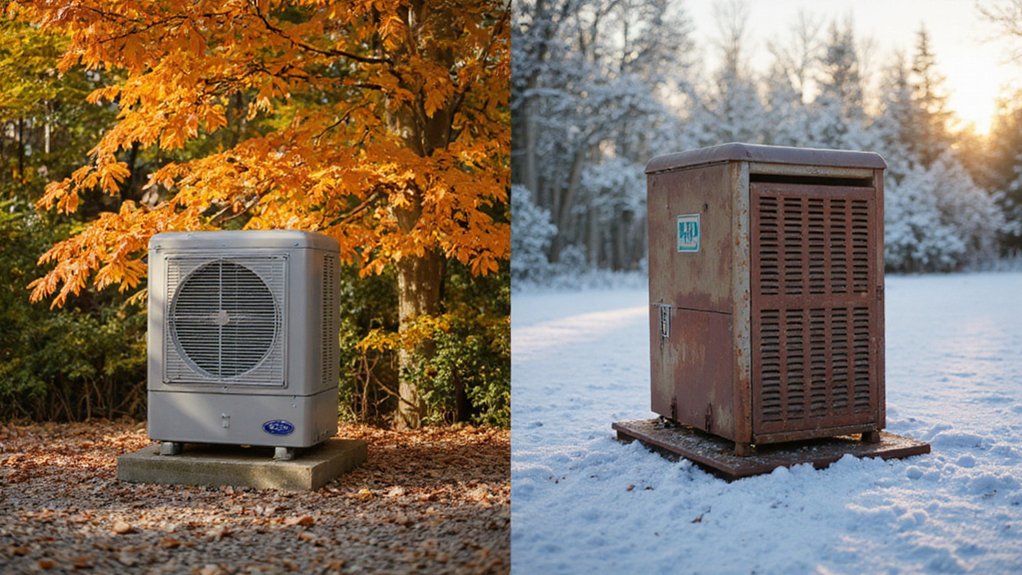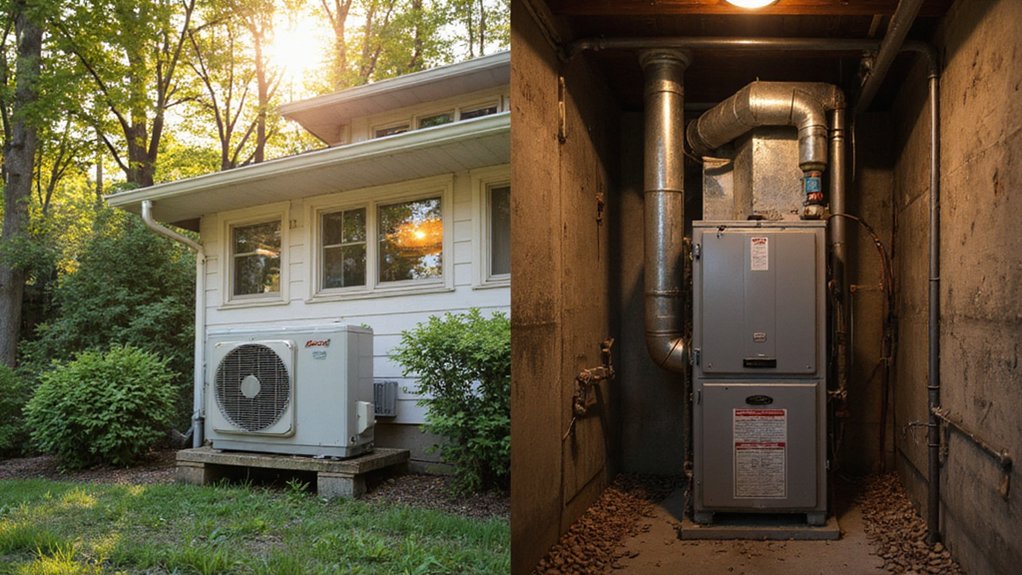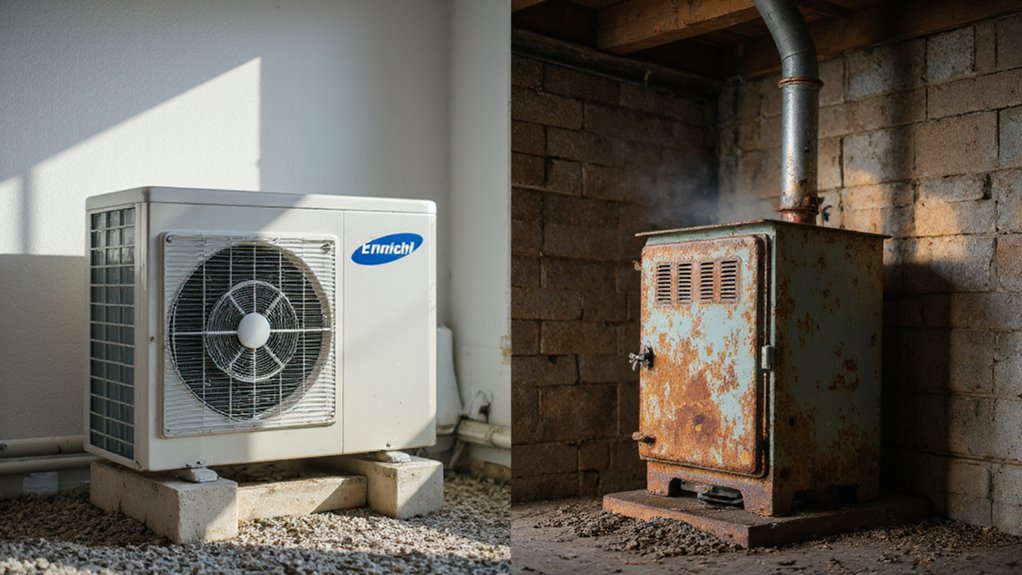related posts
Heat Pump vs. Traditional Heating: Which Is Better for Your Home?

If you're trying to choose the best way to heat your home, you're probably comparing heat pumps and older furnace-style systems. Both will keep your house warm, but they do it in very different ways and can affect your bills, comfort, and even the life of your equipment.
Heat pumps are known for saving electricity, but the higher installation price can be a shock. Old-school heating systems usually cost less to install and do great in freezing climates, but they can be expensive to run month after month. So which one actually works better for your home? That depends on what matters most to you.
Key Takeaways
- Heat pumps can cut heating bills by up to half because they use much less electricity.
- Traditional systems perform better in very cold weather and stay reliable even in harsh winters.
- Heat pumps cost more to install upfront but can pay off long term through lower energy costs.
- Heat pumps use renewable heat from the air or ground, so they’re better for the environment.
- Heat pumps need more regular maintenance, while traditional systems usually need fewer checkups but don’t last as long.
What Heat Pumps Actually Do

A lot of people think heat pumps are complicated, but the idea is simple. Instead of burning fuel to create heat, they move heat from one place to another.
In winter, a heat pump takes heat from the air or ground outside and brings it indoors. In summer, it flips and works like an air conditioner. Because it's just moving heat instead of generating it, it uses far less power.
Installation really matters here. If the system isn’t installed correctly, performance drops and the unit wears out faster.
Types of Heat Pumps

Not every home needs the same type of heat pump. Here are the most common options:
- Air-source heat pumps pull warmth from outdoor air. They work best in mild to moderately cold areas.
- Ground-source (geothermal) heat pumps use stable underground temperatures and stay incredibly consistent, but installation is pricey.
- Ductless mini-splits are ideal if your home doesn’t have ductwork and you want room-by-room control.
- Hybrid systems combine a heat pump with a traditional heater so the furnace can kick in only during extreme cold.
- Absorption heat pumps run on gas or propane instead of electricity and work well in very specific setups.
Why People Like Heat Pumps

If you talk to homeowners who switched to heat pumps, most will mention two things: lower bills and a smaller environmental impact.
Heat pumps don’t burn fuel. They just move heat. That difference means they can cut your electricity use a lot. Some households see up to a 50% drop in heating costs.
They’re also easier on the environment since they don’t depend heavily on fossil fuels. Cleaner heat also means better indoor air quality for anyone sensitive to fumes or pollutants.
Where Heat Pumps Fall Short

They aren’t perfect, and it’s good to know the downsides before committing.
1. The upfront price is high
Heat pumps cost noticeably more to buy and install compared to a traditional furnace. If your home needs ductwork changes, the price goes up even more, which can make budgeting tough.
2. Very cold temperatures can be a problem
Heat pumps work well in cool to cold weather, but in places where winter gets extremely cold, they can struggle to pull enough heat from outside air. A backup heat source may be needed.
3. They need more routine care
A heat pump runs all year, so it needs regular filter cleaning and system checkups. Skipping maintenance can shorten its life and raise energy use.
What Traditional Heating Systems Do Well

Traditional heating systems include gas, oil, and electric furnaces. They generate heat through combustion or electrical resistance and send it through ducts or radiators.
Why Some People Prefer Traditional Heating Systems

- They warm up the house fast.
- They’re more reliable in extremely cold climates.
- They cost less upfront than heat pumps.
- Repairs are usually simpler and cheaper.
Traditional heating isn’t outdated. It’s still the best match for certain locations and budgets.
Downsides of Traditional Heating Systems

There are trade-offs:
- They use a lot more energy, which means higher monthly bills.
- Fuel-based systems release emissions, so they’re not environmentally friendly.
- Most need major repairs or replacement within 10 to 15 years.
- They often heat unevenly, leaving some rooms cold.
Which One Uses Less Energy?

If energy efficiency is important to you, heat pumps win easily. For every unit of electricity they use, they can produce several units of heat. Traditional heating systems can’t match that, especially gas and electric furnaces.
Heat pumps draw heat from air or underground energy, which makes them much cheaper to run and more eco-friendly.
Price and Long-Term Savings

A heat pump costs more to install, but because it uses much less energy, many homeowners get their money back in long-term savings. Lower monthly bills can make a big difference over the life of the system.
Traditional systems cost less upfront, but higher fuel and electricity use can end up costing more over time.
Final Thoughts
There isn’t a one-size-fits-all answer here.
If you live in a place with moderate winters and want lower energy bills, a heat pump is probably the smartest choice. If you’re in a freezing climate and need reliable heat no matter how cold it gets, a traditional furnace might make more sense.
Think about where you live, what you’re willing to spend upfront, and how much long-term savings matter to you. Once you weigh those factors, the right choice becomes much clearer.

other blog posts
Navigating the Essentials: A Guide for Business Owners on Commercial Refrigeration
Why Your Heat Pump Is Making Noise: Causes, Risks & Quick Fixes
Why Your Air Conditioner Isn’t Cooling Properly - 7 Common Causes and Fixes
Ready to Enhance Your Comfort?
Contact us today to schedule your service, learn about energy-saving rebates, or join our Maintenance Membership program.



